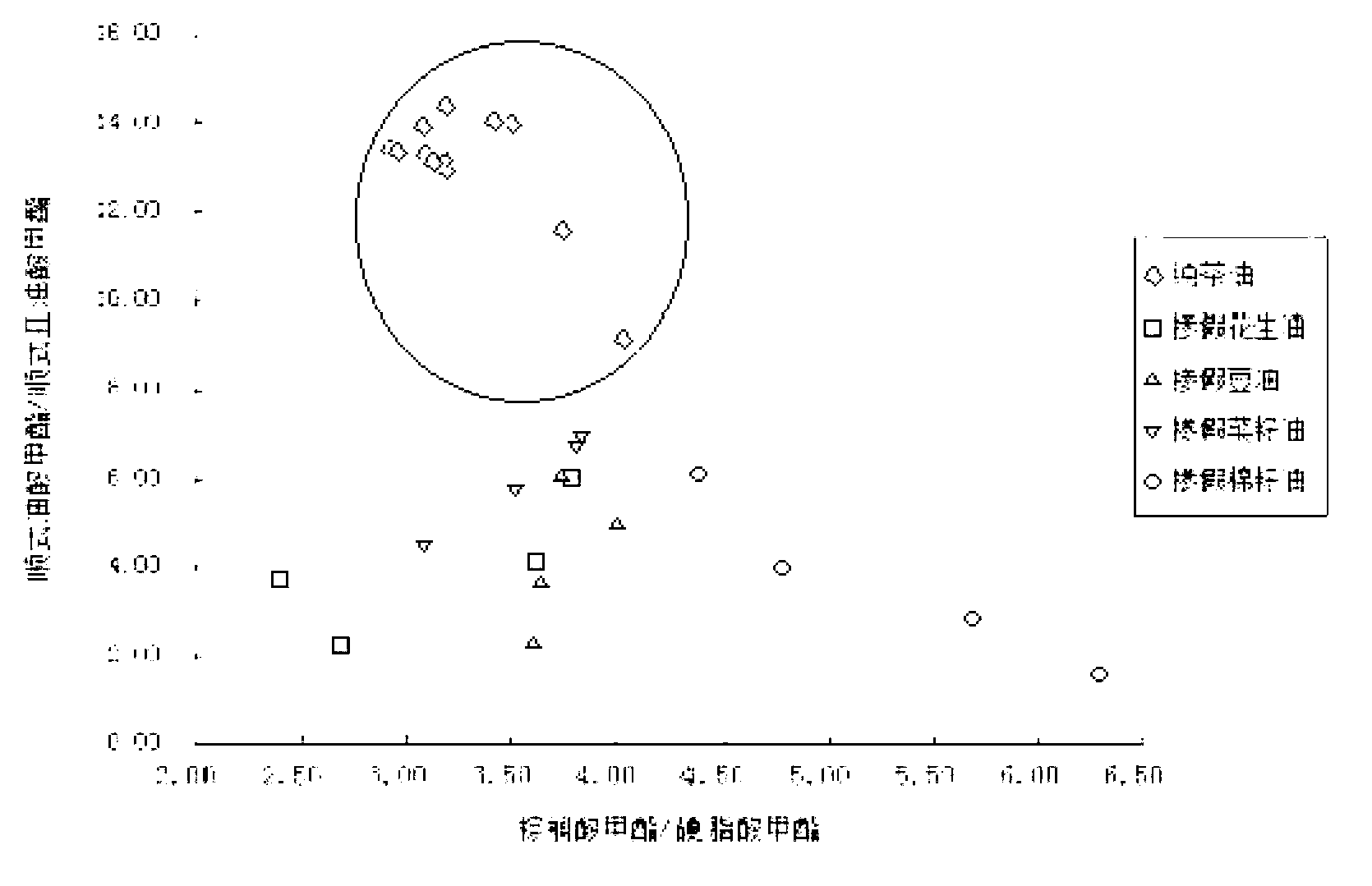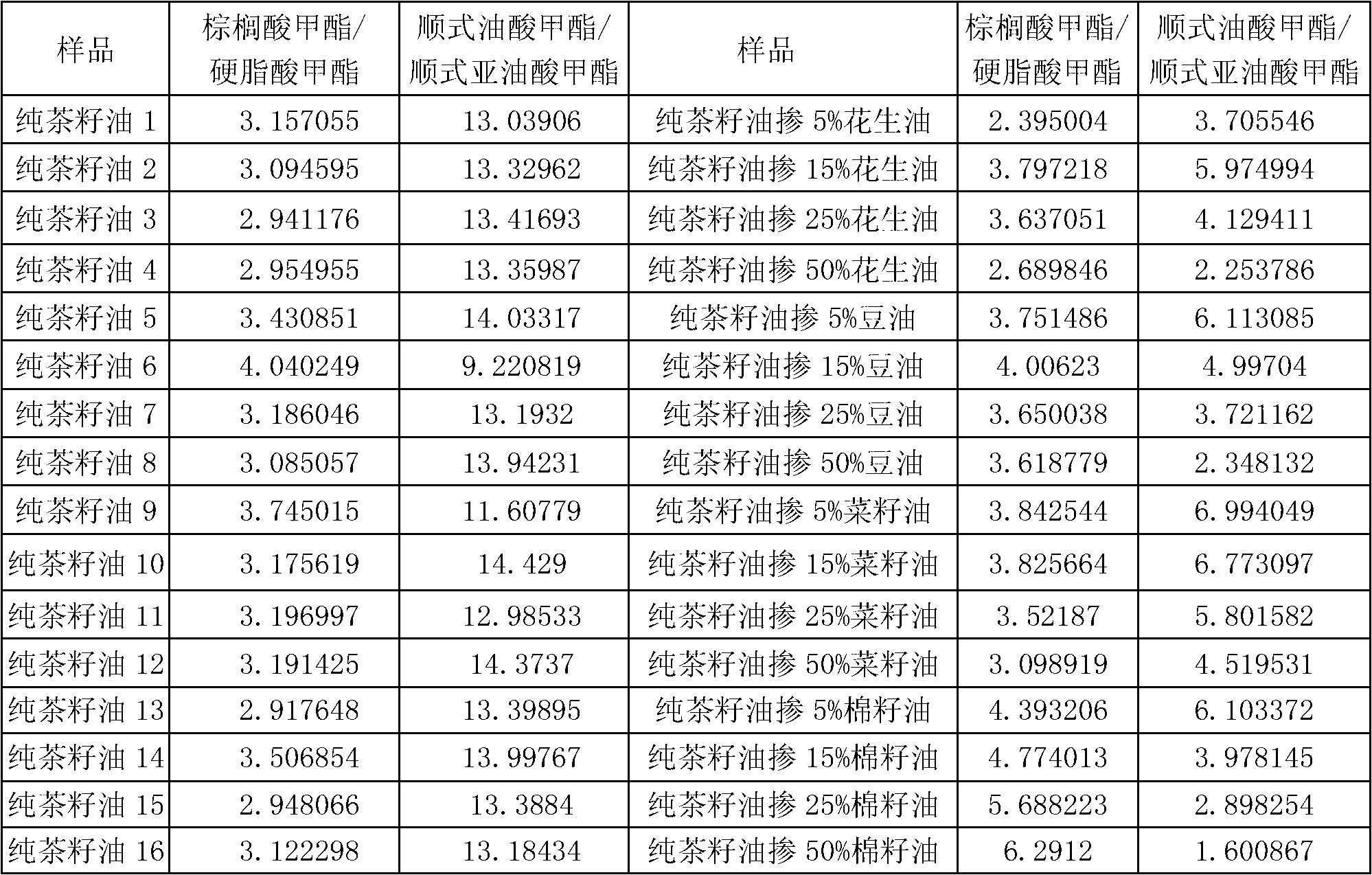Detection method for tea seed oil adulteration based on ratio of main fatty acids
A detection method, tea seed oil technology, applied in measuring devices, instruments, scientific instruments, etc., can solve problems such as difficult analysis, poor versatility of measurement results, and adulteration of edible vegetable oils
- Summary
- Abstract
- Description
- Claims
- Application Information
AI Technical Summary
Problems solved by technology
Method used
Image
Examples
Embodiment Construction
[0015] Collect 16 tea seed oil pure oil samples from different producing areas such as Hunan, Hubei, Jiangxi, etc., choose a pure tea seed oil sample for adulteration sample design (that is, pure tea seed oil is mixed with 5%, 15%, 25%, 50% volume ratio of peanut oil, soybean oil, rapeseed oil, cottonseed oil); the above-mentioned tea seed oil pure oil sample and the adulterated oil sample were subjected to methyl esterification treatment according to the aforementioned methyl esterification treatment method, The original fatty acid fingerprints of these tea seed oil pure oil samples and adulterated tea seed oil samples were collected by gas chromatography and mass spectrometry (analysis conditions were the same as before); the collected original fatty acid fingerprints were quantified by normalized area method. For fatty acids, calculate the ratios of methyl palmitate / methyl stearate and methyl cis oleate / methyl cis linoleate, see Table 1 below. Then according to the ratio of...
PUM
 Login to View More
Login to View More Abstract
Description
Claims
Application Information
 Login to View More
Login to View More - R&D
- Intellectual Property
- Life Sciences
- Materials
- Tech Scout
- Unparalleled Data Quality
- Higher Quality Content
- 60% Fewer Hallucinations
Browse by: Latest US Patents, China's latest patents, Technical Efficacy Thesaurus, Application Domain, Technology Topic, Popular Technical Reports.
© 2025 PatSnap. All rights reserved.Legal|Privacy policy|Modern Slavery Act Transparency Statement|Sitemap|About US| Contact US: help@patsnap.com


